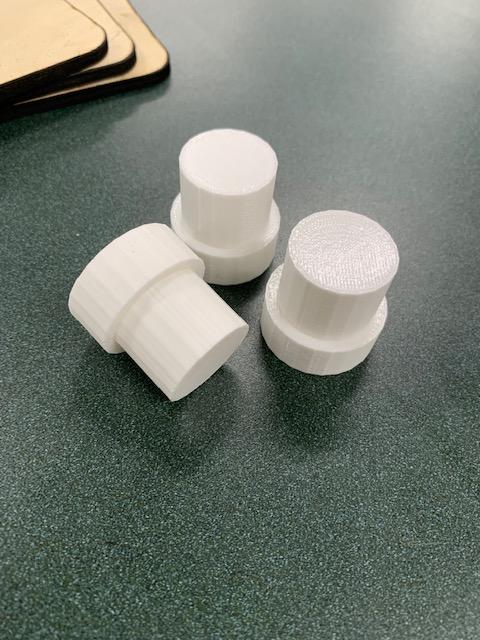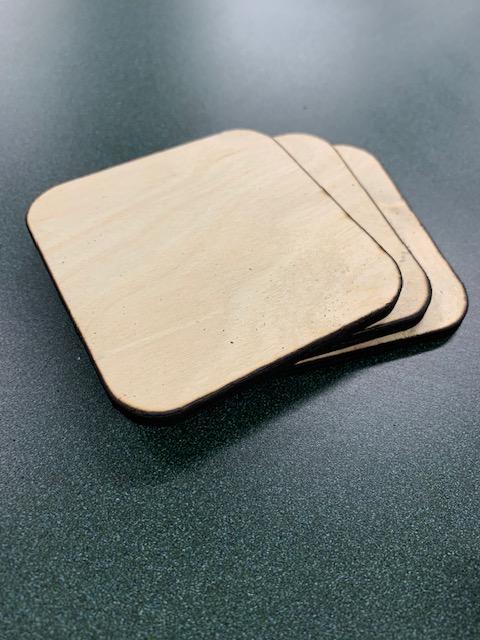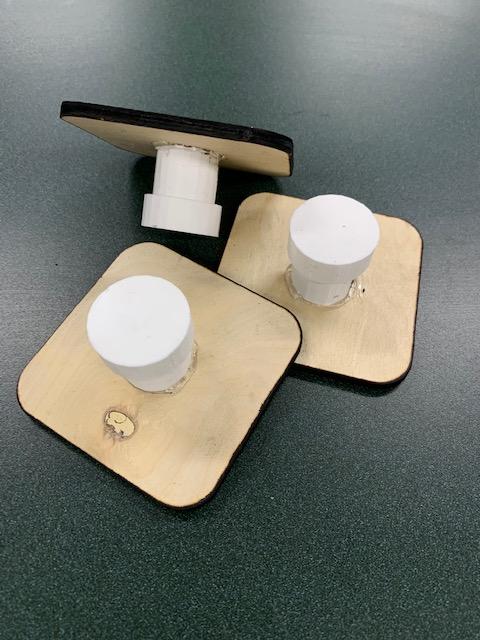Graphing Stamps

For this project, I made graphing stamps (unit circle and coordinate plane designs) for my teacher Ms. Thomas. This teacher needs a way to make graphing stamps for her math classes, because it takes too much time for students to draw graphs during class or for homework, and using a stamp is not messy or hard. To solve this issue and make successful stamps, I will use the laser cutter to engrave rubber with the required designs, 3D print stamp handles, and laser cut wooden stamp bases.
Supplies
.jpg)
Materials: (depends on quantity of stamps being made)
- Special Rubber for Laser Cutting: https://www.amazon.com/gp/product/B017IHVSLM/ref=as_li_ss_tl?ie=UTF8&linkCode=sl1&tag=geeksmithing20&linkId=b8aaee20540a71000f21dc96e9ea74a7&language=en_US&th=1
- At least 0.25” (height) by 3.5” (length x width) blocks of laser cutting wood
- Ink for the stamps (client’s choice)
- Plastic 3D printer filament (depends on type of 3D printer)
Tools/Programs:
- 3D printer (In this project a PrusaSlicer 3D printer was used)
- Laser cutter (In this project a Glowforge laser cutter was used)
- Inkscape (download)
- TinkerCad (online program)
Digital Design


- Import the required designs into Inkscape as .svg files and change the measurements to 3” x 3” in length x width, then apply Path --> Trace Bitmap --> Brightness cutoff
- Create a new Inkscape document and place black squares onto it using the square tool on the left bar, then change the Ry setting at the top (vertical radius of the corners) to 0.5 and the square dimensions to 3.25" x 3.25" in length x width (For the wooden stamp base)
- Save those documents and sign into TinkerCad, use a cylinder from the right menu and change it to 1” x 1” in length x width, then place a tube shape that is 1.25” x 1.25” in length x width around the bottom of the cylinder so that it forms a tight and evenly spaced ring around it
- Highlight the cylinder and tube together and change the height to 1.25” (For the stamp handle)
3D Printing, Carving, and Engraving
.jpg)
.jpg)
- Export your TinkerCad file to the 3D printer being used and attach the filament, then wait for it to print
- In Inkscape, go to "File" --> "Save as" (.svg) for both of the documents and enter separate recognizable names for them
- Sign in to your laser cutting program (Note: in this case it is Glowforge Premium so some settings may be different depending on your chosen brand) and click "Create a new design" --> "Upload a file" choose the file with the wooden stamp base(s)
- After the design is rendered, open the settings on the left bar and select "Cut" --> "Manual" and adjust the settings depending on the type and thickness of the wood chosen
- Make sure the design fits properly onto the material and change the material thickness to the thickness of the wood you are using (click "Unknown" --> "Use uncertified material")
- After the wood has been cut, click "Create a new design" --> "Upload a file" and choose the file with the prepared rubber engraving designs
- Select the designs and click the stamp tool on the right (Glowforge Premium), keep all the standard settings the same with 0.25 inches of padding
- On the left bar select "Engrave" --> "Manual" and keep all the settings the same as the default except, Speed: 310, Precision Power: 70, and 450 Lines Per Inch
- Go to the cutting menu for the outline of the engraved stamp and keep all the standard settings the same as the default except, Speed: 100 and Precision Power: Full Power
- Send the designs to the laser cutter and wait for it to finish engraving/cutting!
Putting It All Together



- Hot glue the 1" x 1" length x width ends of the 3D printed handles to the back of the laser cut wood stamp bases (attach in the middle of the wooden stamp bases)
- Then on the other side of the wooden stamp bases super glue the engraved rubber designs (some excess rubber may need to be cut with scissors so that it fits onto the wooden base)
- That's it! Now you have easy to use graphing stamps!